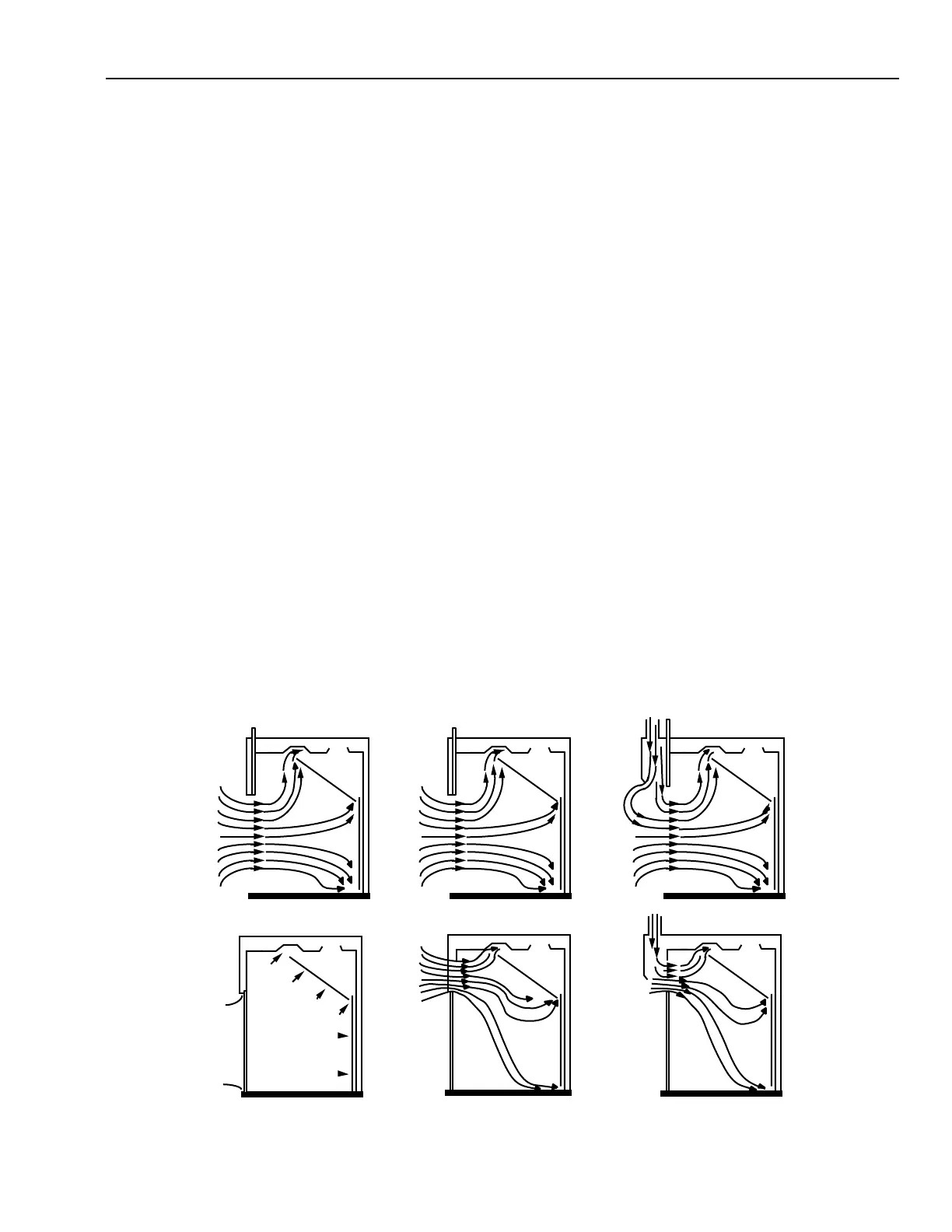ENGINEERING MANUAL OF AUTOMATIC CONTROL
BUILDING AIRFLOW SYSTEM CONTROL APPLICATIONS
287
Essentially, the increase of outdoor air above that required to
maintain building pressurization is done the same way as mixed
air control except outdoor air is controlled by flow rather than
mixed air temperature (Fig. 42). In colder climates, overrides
must be included to avoid freezing coils.
MULTIPLE FAN SYSTEMS
Multiple fan systems are a form of zone airflow control
systems. The same concepts for zone pressurization using
airflow tracking or direct space static pressure control apply to
multiple fan systems. A return fan is modulated instead of the
zone return damper to control zone pressurization.
EXHAUST SYSTEM CONTROL
TYPES
Local exhausts are individual exhaust fan systems used in toilets,
kitchens, and other spaces for spot removal of air contaminants.
These fans are generally off/on types. They should be controlled
or at least monitored from a central location as the exhaust airflow
can significantly affect energy efficiency.
General exhausts route contaminants into common ducts which
connect to a common exhaust fan. If the airflow is manually
balanced, the exhaust fan runs at a fixed level. However, if the
airflow is controlled at each entry to vary the airflow in response
to the local need, duct pressurization control of the exhaust fan is
required. It may also be necessary to introduce outdoor air prior
to the general exhaust fan in order to maintain a minimum
discharge velocity.
SASH OPEN
STANDARD
SASH OPEN
AUXILIARY AIR
SASH OPEN
BYPASS
SASH CLOSED
SASH CLOSED SASH CLOSED
C1484
FUME HOODS
Fume hoods are the primary containment devices in most
chemical-based research venues. The lab envelope itself
becomes the secondary containment barrier. In all cases, the
basic use of the fume hood is for the safety of the worker/
researcher. Because no air is recirculated to the lab, the fume
hood is also the primary user of energy in most labs. The
continuing control challenge is to provide the safest possible
environment while minimizing operating costs.
There are three types of general purpose fume hoods (Fig. 43):
bypass, auxiliary, and standard. Bypass and auxiliary air hoods
approximate a constant exhaust airflow rate as the fume hood
sash opens and closes. Operation of the standard hood causes the
face velocity to increase or decrease with the up and down
movement of the sash as a fixed volume of air is exhausted
(constant volume).
The bypass hood limits face velocity to about twice the full
sash open face velocity which may be acceptable. However,
conditioned air is always exhausted making energy savings
improbable.
The auxiliary air hood is a bypass type with a supply air
diffuser located in front of and above the sash. If the make-up
air through the diffuser is not conditioned as well as room air,
some minimal energy savings result by employing this type of
equipment. However, the performance of this hood is
controversial regarding containment of materials in the hood,
operator discomfort, and thermal loading of the laboratory. Its
use is usually discouraged.
Fig. 43. General Purpose Fume Hoods.

